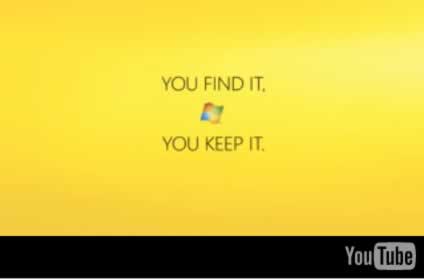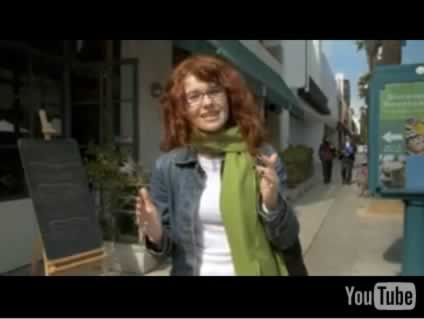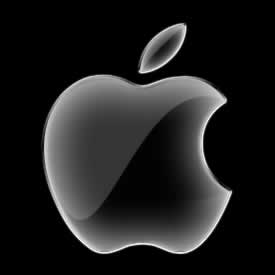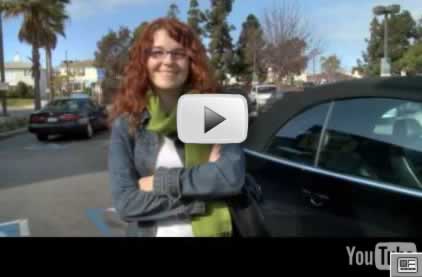
When presumptions of documentary hold, truth be told?
All the world’s a stage, so inferred — As you like it.
And, to that, we are all mere actors, exiting, staging, right, left? And finally, off the stage?
Advertising, by its very positioning, is, essentially, staging. It’s the circus of ideas presented, that reflect enterprise and commerce — one story told, offered to another, sold to an other. And that’s the staging, and the staggering, of a series of nearly theatrical references to the narrative manifestation of ideas. And in that staging — the pomp of presentation — where’s the truth?
There’s always some rattling commentary going on, when it comes to advertising — and, more often than not — the idea of some kind of banter is actually stimulating what the ad is for in the first place: conversation. Sharing. Connections. Building dialogue. And rippling reflections, between brand and consumer — the heart of storytelling.
Some of that — impassioned as it might be — is showing off the very nature of the brand relationship — that is, people care about it. The brand becomes something that’s linked to them, their personal ideology — who they are. And in that — they, the experiencer — become the brand. These days, either bragging rights or hated commentary are all full game; you’re either on one side, or the other; you’re in, you’re out. But the consumer is rarely opinion-less.
Some of that discussion, culled from blogs and running reviews, is like this:
Andrea James | PI staff blogger offers, “She says on her MySpace page that she is “going to school and finishing my degree AND trying to pursue acting at the same time. Just living the dream people.” She’s also got a profile on IMDB. On her Web site, Lauren De Long claims more than 20 film and commercial credits. She plans on starring in a 7-Eleven commercial. But details on the 7-Eleven gig may have been scrubbed from her site, because it’s not on there as of Tuesday morning.
As noted — “The real winner in all of this may be De Long, whose acting resume is bound to grow”, by the exposure alone.
On her site, she originally thought the Microsoft video audition, then commercial, was a market and research job regarding laptops. When she learned the truth, “tears, laughter and excitement” ensued. This isn’t a huge surprise. It would have been more surprising if she were not an actress.”
And people respond, to this and other gatherings — “As a Mac fan I thought it was a really good commercial and it was exactly the kind of commercials that MS(FT) should be making. Yeah it probably was a semi-staged “reality TV” spot just like 99% of reality TV. The Real World is staged.” — from 8bitjoystick. Another retorts: “That she’s an actress doesn’t change the fact that the ad was spot-on. I’d love to buy a comparable Mac to the PC I currently use, but I don’t have double the budget to spend on it.” Or “Really? A person in a commercial was actually an actress? Amazing.”
Here’s another news flash: “She’s hot.” Or, “A hundred times better than the Seinfeld garbage they wasted $20 million on. In your face, Mac$$$$.”

There are a couple of compelling points to consider — one, the strategy — what is the tactical consciousness about how to beat out the culture of Apple? And two, given what Apple’s done, in telling the story of “I’m a Mac | I’m a PC” and the psychic tribal positioning that is inherent in that modeling (you’re either the one, or the other — and which do you identify with?), what new ground could be considered in the battle tactics to win over more people — especially now?
Money.
That might make sense — and for right now, the notion of focusing on simply that, money — you’ve either got it to spend on something that is inherently expressed as better, or you don’t. You’re either in the cultic framing of the AppleMind, or you’re part of something else — another domain. Given the cultural impressions of Gates, Ballmer and Jobs, which tribe will you follow? According to Farhad Manjoo, writing for Slate, “”Microsoft wants you to buy PCs because they’re cheaper than Apple products, not because they’re better machines.”
“Until recently, both Apple and Microsoft have shied away from the price fight. In its ‘I’m a Mac/I’m a PC’ ads, Apple avoids mentioning its machines’ higher prices; instead, it takes on Windows’ shortcomings. The implication is that if you go for a PC to save money, you’ll get what you pay for.” That’s a sensible positioning — merit-based, value propositions — it’s why, for example, to the contrary modeling, the perfect storm of cut-rate vendor relationships and deals from WalMart make it one of the biggest global retailers ever. Same with Costco — though their positioning is different. Manjoo continues, “I’ve been chronicling Microsoft’s evolving marketing strategy for a few months, and I’ve been mainly critical. The ‘Mojave Experiment,’ which tricked people into trying Vista, didn’t exactly inspire confidence in the operating system’s standalone merits. And its last big campaign, featuring an ethnically diverse lot declaring that they were PCs, came off as the company trying too hard to be cool,” Manjoo writes. “Now Microsoft has taken off the gloves.” And, as ever, the Mac party members are out in force, armed to the teeth, decrying the Microsoft positioning and evil untruths.

“Predictably, Mac partisans have found much to criticize in the spot. They say it appears staged, and they note that Lauren is an actress. Plus, they insist she’ll regret buying that cheapo machine—it’s terribly slow, has old-model parts, meager battery life, weighs a ton, is packed with annoying trial software, and features Windows Vista Home, the most basic version of Microsoft’s operating system,” Manjoo writes. (“It is the epitome of what people dislike about PCs,” writes Computerworld’s Seth Weintraub.)
I’d point out, as I have before, that the challenge with the “cheap model”, is that, unless the brand positioning is based on the premise of “you get what you pay for”, what you’ll get is a relationship that is inherently founded on cheapness.
And that needful psychic space, yet again, shall speak to short life. In the evolving aspirations of brand relationships, the skew is invariably up, not down. Sure, down in a down cycle, a consumer might be simply forced downwards in the commodity pricing model — but the dream, the ever-present human condition aspires for better things — some light, in the ending channel of the tunnel.

There’s some harmony there, to that viewpoint — about selling cheap, as a tactical engagement, especially under the pressure of these days.
“And that suggests the danger here for Microsoft. In the short run, its strategy makes some sense. The ads are well-produced, entertaining, and get across the basic point very well—if you, like Lauren, are on a budget, there are many Macs that you simply can’t afford. Today, lots of people are on a budget.” But, long term, it’s not a stable expression of the brand — or, for that matter, building relationships. According to Slate technologist, Manjoo, “What happens when the economy improves? What happens when young, telegenic people in L.A. can once again spend $1,300 or $1,500 or more for a laptop? What will they do when they hear from Lauren that her $700 machine is grindingly slow and that hauling it around is cramping her acting career? By selling people lots of cheap Windows PCs now, Microsoft risks cementing the idea that PCs are cheap. And in the computer business, “cheap” isn’t an adjective you want to court. Customers may start to think that paying a bit more will get them something better. And when they can afford to pay more, they will.”
Me, I look more to the relationship — if I’ve got one, I’m likely not to buy if I can’t afford it — and wait until I do. Right now, there are, indeed, some things that I’d like to buy — but I can’t afford it (at the present). But if there’s something that I want, I need — to that “strategy” — I’d rather wait until I can. Especially: working technology.
But, even historically speaking, there’s a framing of increasingly mean marketing; it, too, going down, and less to the upbeat. Baltimore blogger, David Zeiler, offers “Numerous Mac Web sites have deconstructed the ad over the past several days, noting among other things that the $699 Hewlett-Packard laptop Lauren obtains at a Best Buy is a lousy PC. Moreover, the ad ignores why increasing numbers of Windows users have switched away from cheap PCs to Macs, such as the iLife software suite, superior build quality and overall ease of use,” Zeiler writes. “The ‘Lauren’ ad is but the latest sign that Microsoft doesn’t like what it sees in the marketplace” And, expanding on that premise — “Hey, if I ran Microsoft, I’d be worried, too. Expect Redmond’s public assault on Apple not only to continue, but to get nastier.”
And the authentic — I’m wondering about that, the idea of transparency and open revelation of “this is who we are, and where we live — and what we offer”. That opening in the commercial suggests just that — “here, see what you can find”. And, to Ad Age’s assessment, “in today’s social-media-centric world it’s imperative that you’re transparent, honest and authentic.” Freddie Laker, AdAge columnist, adds some meat to the matter — about truth fullness.
He surely supports the strategic intuition of “Microsoft’s logic of using price as its big differentiator as opposed to focusing on establishing itself as a premium brand alongside Apple.” But that’s not the drag of the challenge, here — he continues, “But I will say that if you are going to argue this point, which is something Microsoft could do, then you have to do it right. What this means is going out and really finding the best laptop you can for under $1,000 and then ideally recommending one with your latest operating system on it. Next, find someone who’s not in SAG to be in your commercial.”
There you go; it’s a story in a story in a story, transparently layered, that does some good to the picture, the brand and the positioning holistically — Microsoft finds someone who’s looking for a computer, asks them to find one under a grand, and sends them out exploring. Cool results come back — and they, and the audience, have learned something.
Olive Garden — Lakers: “a brand launches a campaign in which it is telling the truth yet gets called out as a liar — the Olive Garden that claimed that the chain had a cooking school in Tuscany, Italy. I couldn’t believe they would make a statement like and do it on prime-time TV, where folks like me could easily check and find out that it is a complete lie.” Truth be told, “As it turns out, it does have a school in Italy. What was far more interesting, though, was the number of people that were online having the same doubts as me and were poking fun at the brand, even though unlike the “Laptop Hunters” example above, The Olive Garden did nothing wrong” according to Lakers.
There’s a risk, in connecting with storytelling — and the framing of the transparently real brand — community response: “brands have an excellent opportunity right now to tap into a variety of free social-media-monitoring — and the tools to sample the networks of connectivity. According to AdAge -“whichever you select, these tools enable you to discover misinformed consumers and politely engage them and let them know real facts about your business. They may also help tip you off that the public has caught onto your little web of lies and give you a chance to right the ship before it’s too late.”
About the truth, it’s far easier to manage than distortion, because, like the crack in the mirror, it’s less about that one viewpoint, but the indices of many; one refracted reflection will surely reveal others — and what you see, progressively, is what you get. More cracks — and a reflected surface that is far more difficult to rectify; it’s too broken to be seen, in scene, clearly.
What’s your take? Truth, or dare? Care?
